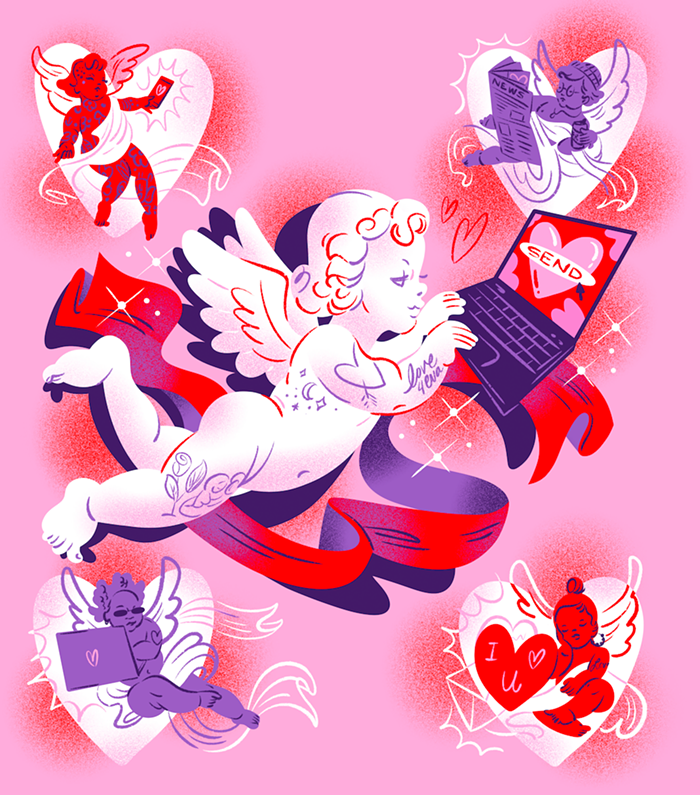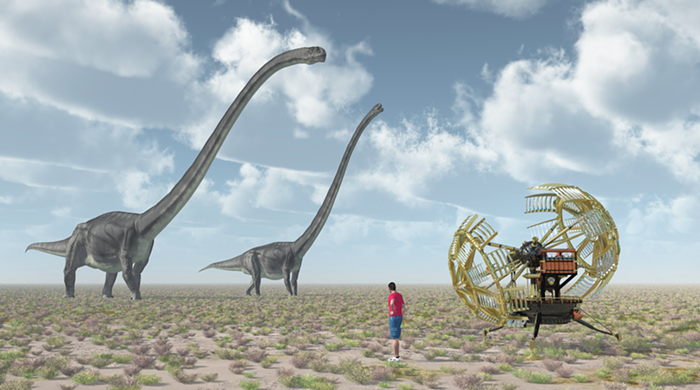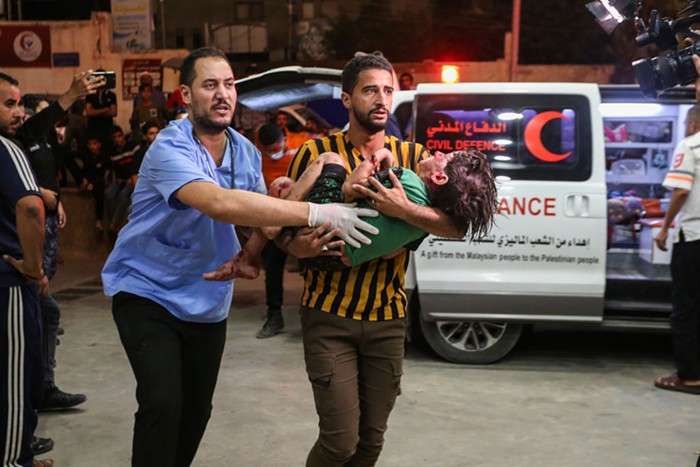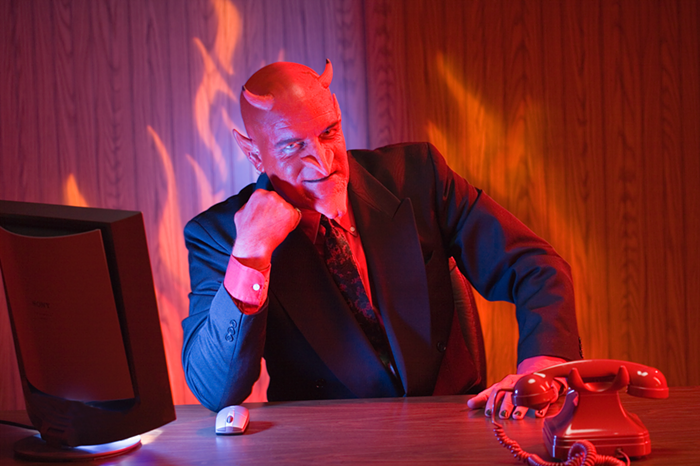THE FIRST TIME I wore fake blood, it was Halloween and I was about five years old. Two red lines ran from the edges of my lips to the bottom of my chin. Without considering the fact that vampires don't exist, I ran around reenacting scenes from Dracula, and collecting candy. I didn't recognize this for the fantasy that it was until last week, nearly 20 years later, while looking at a photograph from Already Dead, Ann Ploeger's screenprinted photo collection featuring models drenched in fake blood.
In one of Ploeger's images, on view at Pushdot Studio, a man stares into the camera. Under his chin is a drooling spill of fake blood. His hair is in sculpted angular tufts and his facial expression looks like a Zoolander runway pose. While no wound is visible, the placement and shape of the blood suggests a cut throat. The combination of fatal wound and runway pose is almost laughable—the I'm-laughing-with-you kind—and looking at face after face, streak after streak of fake blood, I found the models unified by what Ploeger calls "artificial pain."
The day after seeing the Pushdot show, still thinking about artificial pain, I checked out Mary Frey's Imagining Fauna at the Blue Sky Gallery. There, I saw a series of ambrotypes, or images printed on glass. The subjects of these images were animals—a bit uninspiring, until I noticed some unsettling features among these critters. Often, their hair was matted or flat in odd places; their posturing sometimes looked a bit contorted; and their eyes held unnatural, empty stares. Turns out, the animals photographed were from museum archives—taxidermy relics resurrected from the vaults.
Frey's "Grey Squirrel with Nut" depicts a squirrel holding an acorn. The most telling, if not unsettling, part of the piece is the animal's mouth. Only half of its teeth are intact, while the toothless portion looks limp and patchworked, as if post-impact from an accident. Here, evidence of the squirrel's death is present, even as it's repostured as living.
In the front room of Blue Sky, Fake Holidays by Reiner Riedler is up. The show, which displays photos of theme parks from around the world, offers further examples of artificial and manufactured experiences—and the places where artifice breaks down. In "Crucifixion, The Holy Land Experience Theme Park," Riedler captures a theatrical reenactment: Roman soldiers stand guard by Jesus, who hangs on the cross. On the fringe of the main composition, disciples stand watching in horror—one of these men wears a headset with a microphone, defying the period clothing, as well as the illusion created by the scene.
The tension in each of these shows is between the fantasy and the tell: the cut throat and the runway pose; the squirrel holding a nut and its smashed-in teeth; Jesus' disciple and his Bluetooth headset. The thematic consideration of artificial experience that unites these shows comes with a certain seasonal resonance: This weekend, many will manufacture a visit from Santa, bask under the lights of a plastic tree, and indulge in the fantasy of it all. Manufactured experiences provide a way to temporarily exit our lives, and we play along—even when the fantasy is broken before our eyes.













